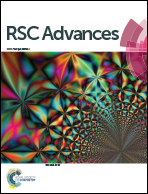Fabrication of a stretchable electromagnetic interference shielding silver nanoparticle/elastomeric polymer composite†
Abstract
Highly conductive and stretchable electromagnetic interference shielding (EMI) materials were developed from a silver nanoparticle/elastomeric polymer (NP/SBS) composite. This material shows superior conductivity and EMI shielding efficiency due to highly incorporated silver NPs forming an electrical percolation. In addition, this composite can endure hundreds of cycles of stretching tests with moderate conductivity and EMI shielding efficiency.


 Please wait while we load your content...
Please wait while we load your content...